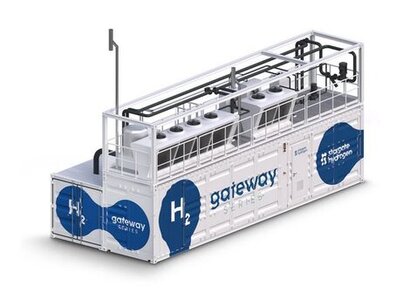
Project partners include the University of Saint Andrews, Agfa-Gevaert, Eindhoven University of Technology, Fraunhofer Institute for Manufacturing Technology and Advanced Materials IFAM. The project brings together researchers and engineers from five countries: Estonia, the UK, Belgium, the Netherlands, and Germany.
In contrast to the commonly adopted approach, the EXSOTHyC project will optimise electrolyser operation towards lower voltages and higher efficiencies.
Within the project, a breakthrough concept for catalyst materials, cell and stack components for alkaline electrolysers will be developed. The full name of the project is ‘Exsolution-based Nanoparticles for the Lowest Cost of Green Hydrogen via Electrolysis’. A class of ceramic materials that form highly active metallic nanoparticles on the surface upon exposure to reducing atmosphere (a process called ‘exsolution’), plays a central role in the project.
“Exsolution materials have revolutionised the fields of automotive emissions, control and solid oxide electrolysis” said Rainer Küngas the CTO of Stargate Hydrogen. “In EXSOTHyC, we are demonstrating the potential of this versatile class of ceramic materials for improving the performance of alkaline electrolysers. We are proud to be coordinating the project and look forward to developing the world’s first alkaline electrolysis stack based on exsolution materials as part of the project.”
The development of exsolution materials in the project will be spearheaded by Professor John T. S. Irvine and his team at the University of St. Andrews. Professor Irvine has authored many of the seminal publications on exsolved nanoparticles, demonstrating the performance and versatility of this class of materials, as well as their unique resilience to degradation.
However, the EXSOTHyC project is not only about making the use of exsolution materials in low-temperature electrolysis applications less exotic, but includes several important further innovations.
The electrode development and fabrication efforts in the project are led by the Fraunhofer Institute for Manufacturing Technology and Advanced Materials IFAM in Dresden.
“We are excited to coat this new class of catalyst material on highly porous three-dimensional electrodes” said Dr.-Ing. Nadine Eißmann, Group Manager Functional Materials at Fraunhofer IFAM. “We will pay special attention on activity, robustness, and long-term durability of the resulting electrodes to enable the path for an industrial application within the upcoming years.”
The operating window of state-of-the-art alkaline electrolysers is often limited due to gas crossover, a phenomenon where gases pass through the porous diaphragm separating the anode and the cathode in the cell. Agfa-Gevaert, the producer of Zirfon membranes, will develop next-generation diaphragms in the project to improve the performance of alkaline cells, particularly at lower current densities.
The project further involves the development of novel membrane electrode assembly concepts, integrating electrodes onto Zirfon membranes as well as investigations in the dynamic operation stability of alkaline electrolysers. These two activities in the project are led by Eindhoven University of Technology.
The EXSOTHyC Project represents a collaborative endeavor at the forefront of innovation, bringing together diverse expertise to address the urgent need for sustainable energy solutions.
The project’s esteemed partners are committed to driving the world towards a cleaner, greener future via breakthrough innovation in alkaline electrolysis technology.
For additional information:

